Iconic TV Villains
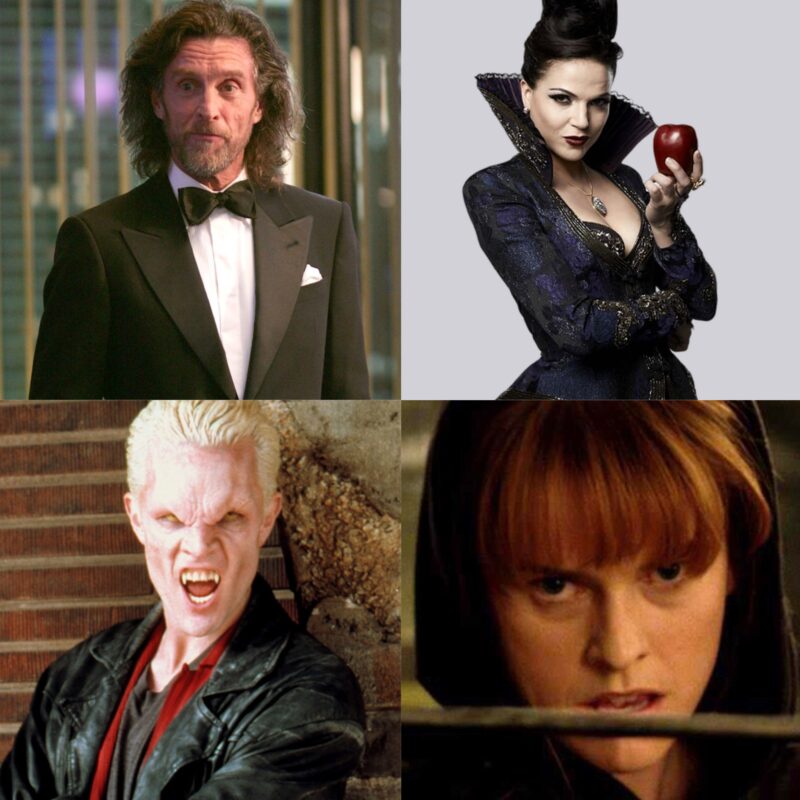
Paying It Forward
This review was published during the WGA and SAG-AFTRA strikes of 2023. The work being reviewed would not be possible without the labor of writers and actors. We support the writers and unions that protect the creatives of our favorite projects. We stand in solidarity with them.
Intro and Disclaimer
A great villain can make even the most insufferable of projects, protagonists (*cough* *cough* Danny Rand), or plot points all the more watchable. Great villains can make us laugh, cry, rage, leer, or even recognize some of the disturbing sides of ourselves. There are villains we love to hate. Villains we actively root for, whether it means reveling in villainy or becoming redeemed. In my opinion, the best villains make you feel all kinds of things. But above all they make you think. Are they evil? Maybe, maybe not. Are their actions at least understandable? Let’s explore some badass, morally gray, or ethically bereft people featured in various TV series.
Much like my article on memorable queer characters in TV, this list is subjective. This is one thousand percent my own opinion and biases. I have not seen every show and have not experienced all of the same villains as others. I might not have seen some of your personal faves. This list is also not exhaustive, as I have seen countless shows in my lifetime. Let me know in the comments if you would like more installments on this particular topic. We could probably get many more parts.
There may be spoilers for the shows Smallville, True Blood, Killing Eve, Breaking Bad, Marvel’s Daredevil, Marvel’s Jessica Jones, Marvel’s Luke Cage, Marvel’s Iron Fist, Game of Thrones, The Boys, Anne Rice’s Interview with the Vampire, Buffy the Vampire Slayer, Angel, Charmed (1998), Once Upon a Time, Rosewell, and Heroes.
Smallville: Lex and Lionel Luthor
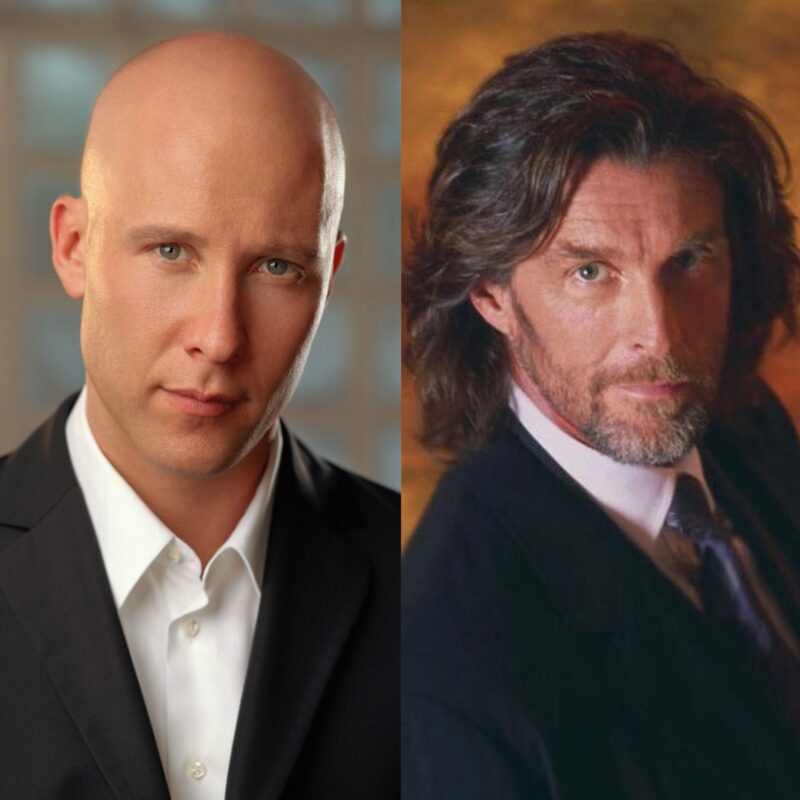
Lex Luthor
Smallville’s Lex Luthor is THEE best live-action Lex Luthor we have ever had. Fight me in the street.
The slow-burn approach from friendship to bitter enemies between Clark and Lex was truly amazing. It made the inevitable beef all the more tragic and personal. Lex was a very complex and layered character. He was spoiled (yet emotionally neglected), entitled, brash, a complete genius, and damaged, but also noble at times. Lex wanted to be the kind of man Clark always was. He also wanted to win the trust and love of Clark’s family and friends. Unfortunately, the Luthor conditioning was too deep. Lex slowly but surely embraced the savagery and deception that came with it.
Lionel Luthor
Lionel was in a lot of ways foreshadowing of who Lex would become. All smiles and charm on the outside, Lionel was corrupt, calculating, devious, and mostly unempathetic. Lionel showed genuine interest in Martha Kent. He also showed rare glimpses of actual concern for Lex. However, Lionel was mostly rotten to the core, up until a failed body swap plot. This cured an incurable disease and filled him with the kind of love and empathy he never knew before. He even became an honest ally for Clark and his allies. However, even after this development, his rage and conniving never fully went away. We saw this when he forced Lana to fulfill her promise to Lex in season six.
Lex and Lionel’s relationship serves as the main foil to the loving, wholesome relationship of the Kent Family. The Luthors knew very little of genuine love. Lionel was extremely a*usive towards Lex most of his life. This helped usher in the devilish chess master who would emerge as the series went on.
The only truly good Luthor was Lex’s sister.
True Blood: Maryann Forrester, Russell Edgington & Lorena Krasiki
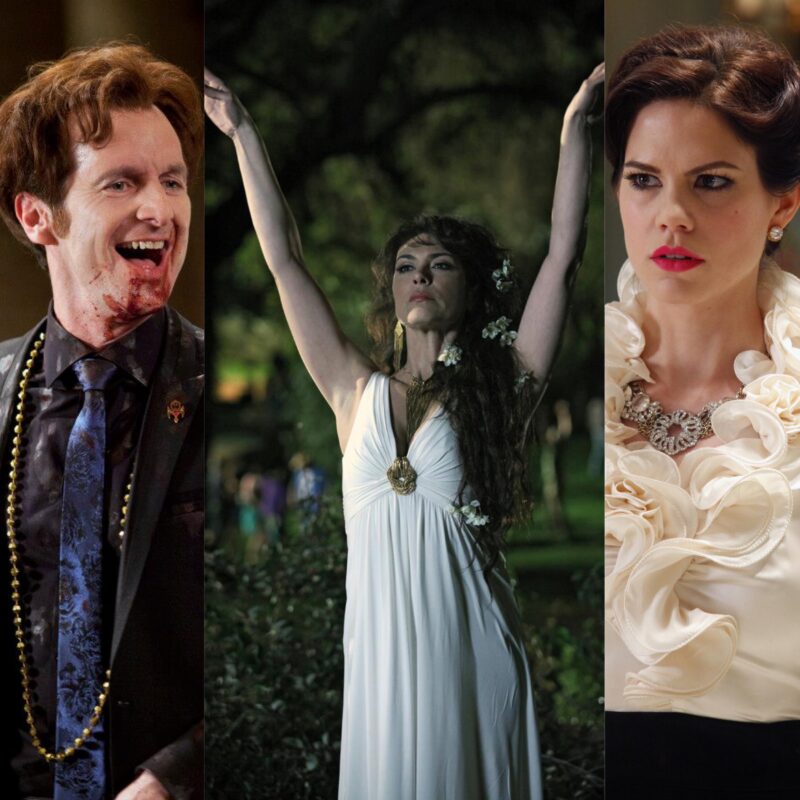
True Blood’s second season was their best, and Maryann was largely the reason for it. Fun, engaging, creepy as fuck, and the living embodiment of chaos and debauchery. Maryann literally brought out the worst in everyone around her. She was an incredibly powerful and effective villain, and she was a villainess to boot! What joy! She could only be stopped when she believed she could be stopped.
Russell Edgington too was an iconic villain, and the very next just behind Maryann. Charming, jovial, brutal, and chilling, though shorter in stature compared to several characters, he was god-like in strength. He was the definition of a Badass Gay, practically unstoppable and completely devoted to his ill-fated paramour, Talbot. The best thing about him was his actor. O’Hare always plays bad oh so well.
While devoted to Bill Compton, of all people, Lorena was the quintessential bad girl badass vampire sire. Much like Darla from Buffy and Angel or Katherine Pierce from The Vampire Diaries, it was lovely to see her be stronger than the series lead male. Seeing him try and miserably fail to physically overpower her brought me pure joy. While it was pathetic to see her so hellbent on getting Bill, the show established right away that the maker/progeny bond is powerful and beyond human comprehension. Lorena, like Lestat or even Eric Northman, was a vampire who reveled in her vampirism. I wish for nothing but laughs and joy for Lorena, Darla, and Katherine in some bar in the afterlife.
Breaking Bad: Gus Fring and Walter White
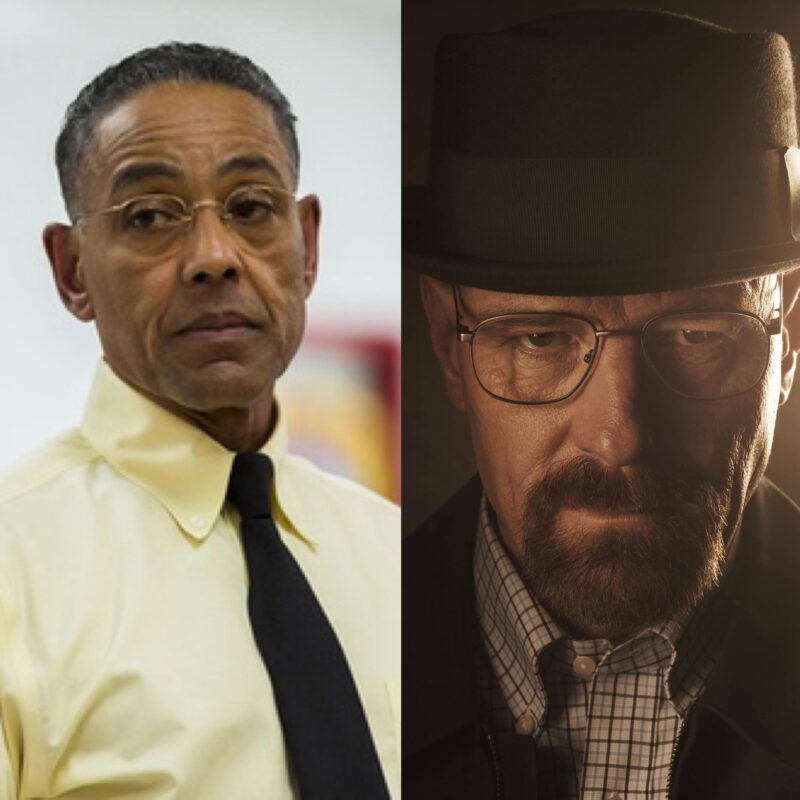
Gus Fring
Gus Fring is one of the very best written, developed, and performed villains in tv history. He is also Giancarlo Esposito’s most famous role to date. Fring is the epitome of the consummate professional, on the surface at least. Affable, punctual, professional, and ever-present at his chain of fried chicken restaurants. He wears that god-awful yellow shirt and a smile on his face and serves customers. However, Gus used his restaurants as a legitimate front for a drug empire. He took his anger out on employees when customers weren’t around to witness. Fring also had some of his own employees deported. He threatened to have Walter’s family murdered. Oh, and he was also a murderer. Fring was terrifying in how suddenly his faux smile would fade. His ultimate exit from the show will go down in history as one of the most memorable.
Walter White
Meanwhile, series protagonist himself, whose actor you might know as the frazzled, bumbling, yet ultimately good-natured father from Malcolm in the Middle, plays a very bad guy here. Though nuanced and not always a total monster like several of the other villains of the show, Breaking Bad ultimately reveals itself to be White’s villain origin story. He blackmailed Jesse to cook meth with him in the first place. Walt had laundromat employees deported. He barged his way back into his wife’s life after she understandably wanted him out. Let’s not forget he forced Jesse to kill Gale. He too was a murderer. Walt even hired Neo-Nazis to kill prisoners. He bombed a nursing home. In one of his worst moments, Walt let Jane Margolis fatally overdose to keep control over Jesse. The man was evil.
Killing Eve: Konstantin, Villanelle, and Carolyn Martens
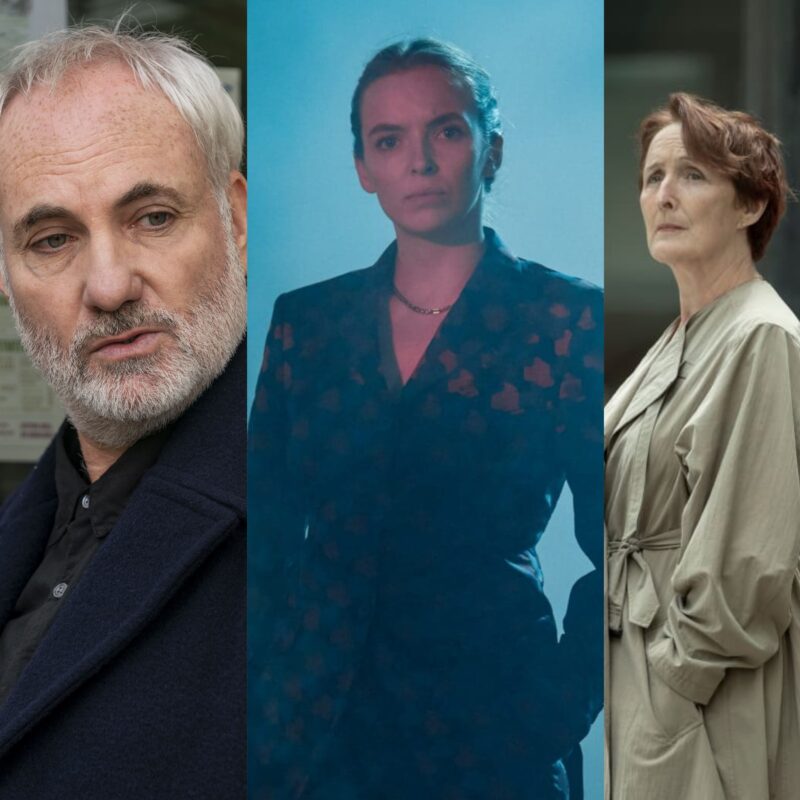
As mentioned in my article on memorable queer characters, Killing Eve was at first an iconic piece of work for its initial two seasons. With intelligent writing, especially in its first season under Phoebe Waller-Bridge’s pen, and iconic acting performances, we got a myriad of layered characters.
Konstantin, Villainelle’s handler, was a master liar and manipulator. He was willing to do whatever it took to get what he wanted and took steps to stay ahead of Carolyn and Villanelle. Konstantin used Eve and anyone else to achieve his goals. He also hit Villaielle with that damn log just to get away and left his family to die (thankfully for him Villanelle didn’t kill them).
Villanelle herself was a fascinating look at someone with psychopathic tendencies and complex psychology. She was effective, competent, sapphic, charming, and looking for connection. She wanted Eve from the very start. Eve, with her own interesting psychological profile, often didn’t realize how she poked the bear, despite also risking it all to be near her and completely disrespecting her marriage for her true desire. Eve didn’t want Shepphard’s pie and Nico, she wanted danger and Villanelle. While complex, Villanelle was villainous, namely when she killed people like Bill and her ex Nadia.
Carolyn was initially a badass to aspire to. She was always several moves ahead, was never afraid to call out Eve on her hypocrisy, and played chess with the best of them. Unfortunately, she was ultimately an agent of the patriarchy and killed Villanelle right as she and Eve were going to have a life together. Fuck Carolyn. And fuck Laura Neal.
The Marvel Netflix Villains: Kingpin, Cottonmouth, Typhoid Mary, Kilgrave, & Black Mariah
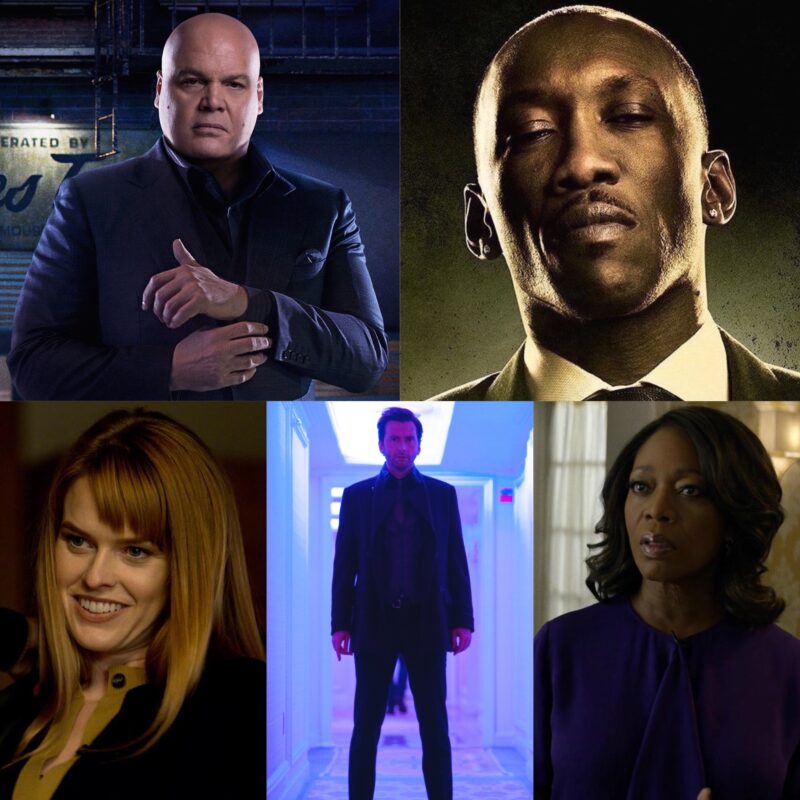
The Marvel Netflix series (aside from Iron Fist) were some of the best, grittiest superhero-related shows we’ve ever had. There are even more villains than listed here, but some were either convoluted as hell with strange choices, such as Elektra being French and her whole “Black Sky” deal.
Kingpin
Kingpin was one of the most complex, sensitive, brilliant, romantic (where Vanessa was concerned, at least), and brutal villains who could utilize spin like no other. He was a villain who was not only an excellent adaptation of the comic character, but is equal parts brain and brawn, chess-mastering his plots to take over the city and its organized crime, and also taking on Daredevil mano-a-mano.
Cottonmouth
Cottonmouth, too, was a corrupt businessman and crime boss who was responsible for unsavory events in Harlem. While he could never physically stand up to Luke Cage, his mind and cunning were more than a match for Cage’s powers. While unfortunate, his ultimate exit from the show was a gutsy move on the writers’ parts that truly impressed, as most shows love to have villains be invincible if they prove popular, even if that doesn’t serve the plot. *cough* *cough* Sylar.
Kilgrave, The Purple Man
Kilgrave, perhaps even greater than Kingpin or Cottonmouth, was the ultimate antithesis of his adversary, Jessica Jones. A literal master manipulator whose powerful mind control powers meant he could use anyone anytime he pleased, his power lay in having people around to control, whereas Jessica’s guilt and trauma led to her routinely pushing people away as much as possible. Jessica Jones season one utilized expert writing, the main character’s trauma, carefully-crafted character development, and lighting and sound design to help Kilgrave’s presence be felt before he even first physically appeared in the present timeline.
Typhoid Mary
Though historically a Daredevil character, Typhoid Mary was introduced in Iron Fist season two. Having no rights to mutants at the time, the MCU version was a human hitwoman with Dissociative Identity Disorder. Deadly in her ‘Walker’ persona, Mary’s ‘Mary’ persona was her innocent primary who disassociated with her violent alter. Alice Eve’s performance was utterly awesome, and Mary was an underrated character saddled to a series with a lead that didn’t deserve her.
Black Mariah
Mariah Dillard, additionally, was an excellent villain saddled with a lackluster lead. Though miles better than Danny Rand, Luke Cage was corny as hell. That dab was nightmare fuel and cringe at the same time. Dillard was a standout along with Misty Knight, Cottonmouth, and others. Her arc with her daughter, another underrated villain, was inspired. Mariah was another publicly altruistic figure who was secretly hateful and scornful of others. Her secretly putting on hand sanitizer with a look of pure contempt after holding a child was a memorable character-establishing moment.
Game of Thrones: Cersei Lannister, Joffrey Baratheon, & Ramsay Bolton
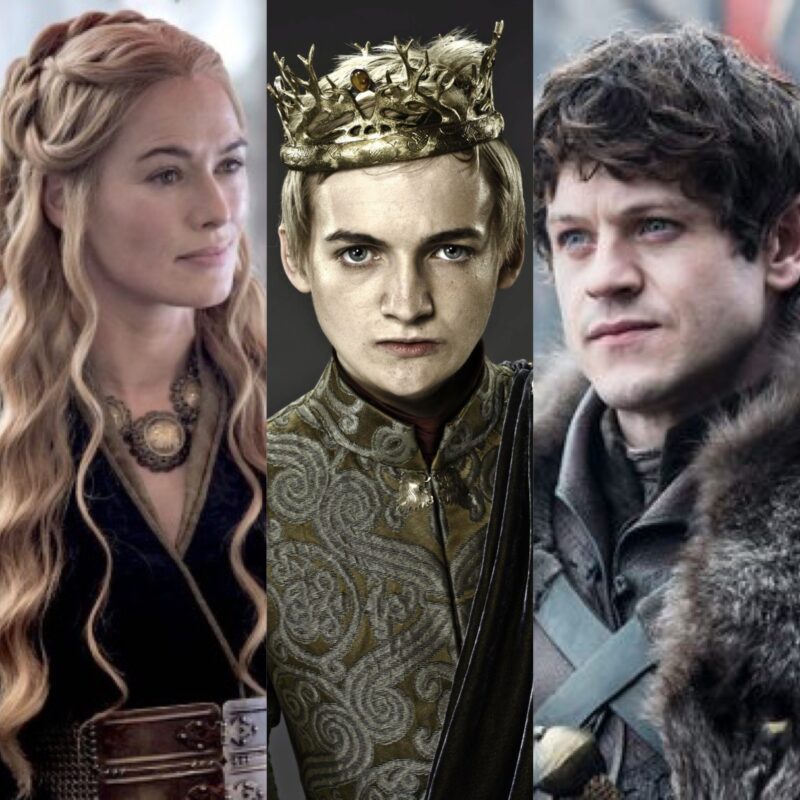
Game of Thrones once had scores of audiences in a chokehold. It had been one of those shows. Shows competing with movies in theaters in terms of visual quality, expert acting performances, intriguing plots, and the like. While as an adaptation there were problems from the very beginning and people act like problems only came towards the end (a topic for another article), the show always managed to have villains we loved to hate.
Cersei Lannister
The beautiful but horrible Cersei was infamously screwing her own twin brother and he fathered all her children. She stole the Iron Throne multiple times. Cersei helped lead to beloved Ned Stark’s death, blew up the Sept, and killed Margery. Worst of all, she got the most lackluster death not befitting the cretin she was.
Joffrey Baratheon
It only makes sense that Joffrey was a piece of shit, given who his family was. Spoiled, entitled, petulant, and a smirking, sniveling bastard, his death was lauded by nearly everyone in-universe as well as in real life. Never has the death of a teenager been more celebrated. All respect to Gleeson, who said he inspired his performance on Joaquin Phoenix in Gladiator. He really did that.
Ramsay Bolton
Just when we thought the Lannisters (some of them anyway) were the worst of the worst, here came this bitch. Ramsay Bolton. His pure sadism and smug expression only added to the horrible things he did to Sansa, a character I always loved in spite of the fandom historically hating her for not being Arya (again a topic for another article). Then he killed poor Rickon! When his evil girlfriend got literally dropped and then he got eaten alive by his own hungry wolves, I cheered. Rest in pieces, muthafucka.
The Boys: Homelander
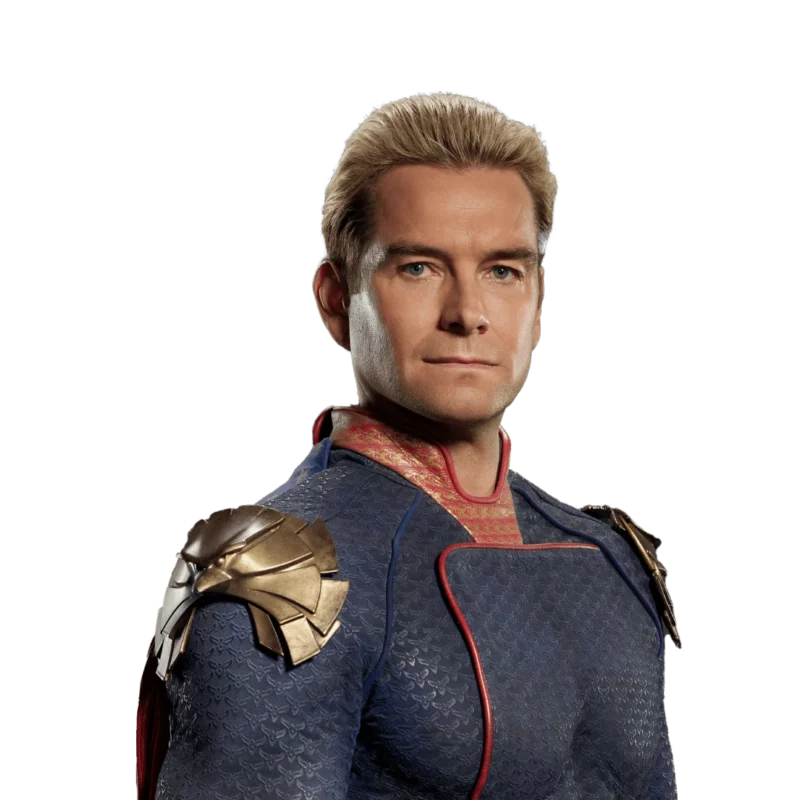
While it seems these days we get nothing but evil Superman stories, very few have done it better than The Boys. Really a composite of both Superman and Captain America, two iconic heroes who symbolize the unwavering altruistic goodness of American propaganda, Homelander accurately mirrors the evil that white America has done and often continues to do. Murderous and entitled beyond comprehension with a god complex? If that’s not the status quo, I don’t know what is.
The fact that Homelander is barely held together by the thinnest veneer of heroism, civility, and duty, is just icing on the cake. Also wonderful is the fact that he ultimately wants to be universally loved and feared. All of that and his being handled by corporate powers that be show that he is more than just an evil Superman. He is the very worst of white America given human form. He’s even a r*pist and willingly participated in domestic terrorism.
Anne Rice’s Interview with the Vampire: Lestat de Lioncourt
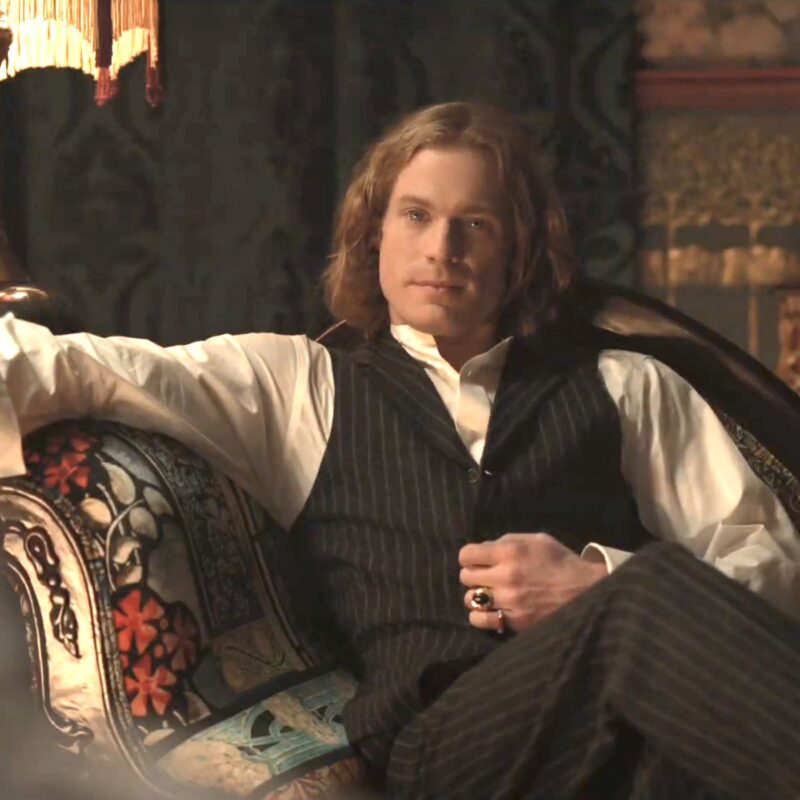
Anne Rice was the queen of vampire literature. She is the one who created, or revolutionized, the sexy vampire bad boy, plus hers were of the homoerotic variety. And no one epitomizes the sexy vampire bad boy better than Lestat. He did it long before Spike, Damon Salvatore, or Klaus Mikelson.
When it was announced that Anne Rice’s famed works would once again be adapted, this time in tv form on AMC, people were nervous. Some folks did not care for it. But a lot of people loved Anne Rice’s Interview with the Vampire. From incredible performances across the board to racial updates that deepened the lore (especially where Louis was concerned), and a more unambiguously queer love between Lestat and Louis, people were impressed.
Sexy as Lestat, Louis, and their initial chemistry were, the show did an excellent job of showing that a vampire such as Lestat is not one for healthy love. He is a vampire. Vampires are sensation and toxicity incarnate. Their existence is inherently selfish, as they must feed on the living in order to exist. Lestat showed Louis and Claudia time and time again that love and family for vampires are not anything resembling those of humans. Lestat’s looks and charm giving way to his monstrous brutality and savagery was a thing of brilliance.
Buffy the Vampire: Glory, Darla, Angelus, Spike & Drusilla
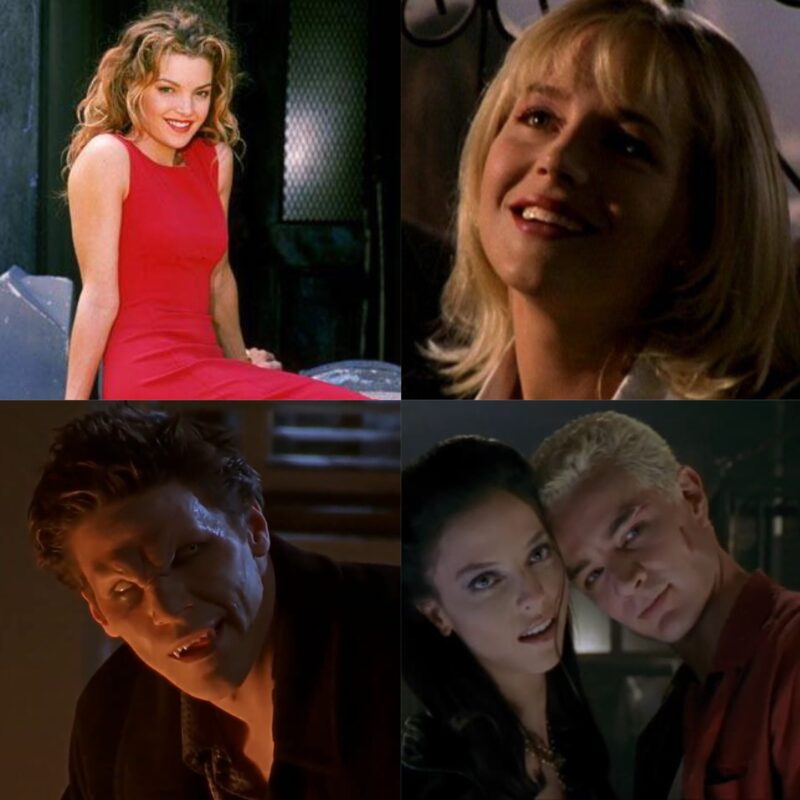
Joss Whedon, as hopefully all of us know by now, is a piece of shit. Unfortunately, he had 90s pop culture in a chokehold with Buffy the Vampire Slayer. Its fun heroes, memorable episodes and storylines, and rich lore helped cement its place in pop culture history, let alone supernatural teen dramas. But perhaps some of the strongest elements of Buffy was its villains, namely its big bads.
Glory
Glory was very fun, hilarious, and unexpectedly powerful. Buffy’s face and reaction to learning Glory was no mere demon, but rather an actual god was both funny AF and iconic (“oh”). Up until Glory, the female combatants Buffy faced were either a match (Faith) or not as strong as her (Darla and Drusilla). Glory shrugged off Buffy’s superstrong blows as if they were mere annoyances, sending her flying with her own hits. Glory’s true weakness being that she had to share a body with a human dude was just great.
Darla
Darla is one of pop culture’s first vampire female sires of a popular male vampire character. She used her beauty to lure in men for the kill. In life, she had been a sex worker who was dying of tuberculosis in the 16th century. Because of her profession and her affliction, she was shunned by the church, which instilled a deep hatred for religion. Darla loved religious wars, as they symbolized the ultimate hypocrisy of systems meant to bring salvation to others. She was turned just before death and she reveled in her vampire powers and vitality. Darla eventually met Liam, whom she turned and renamed Angelus. He was the love of her life, displaying a sadistic cruelty that rivaled her own.
Darla is fascinating in that she is the dark shadow Angel could never fully shake. She was the reminder of the evil that begot him, and the evil they did together. Darla was a vampire who loved being bad. She never understood Angel’s curse that left him with both a soul and morality nor his love for Buffy. Darla’s resurrection in Angel’s spin-off showed even more dimensions to her character, as Angel tried desperately to save her life. Her final act of self-sacrifice to allow their son to be born was her one selfless action. But Darla was always her best when she was the dark angel whispering in Angel’s ear and reveling in violence.
Angelus
Angel, the vampire with the soul, is somewhat boring compared to the likes of Spike or even Darla. Angelus is another story. He is more charming, more jovial, more cunning, and above all utterly sadistic. It is when Angel becomes Angelus that we see how Darla fell for him in the first place. While Spike loves pure violence, Angelus loves to torment and spread pure terror and despair above all else. His stalking and eventual attack and turning of Drusilla was the most evident of this.
Angelus works because he is the polar opposite of the sad, brooding, heroic vampire we are generally used to with Angel. He revels in sensation, and denies himself no pleasure. And his greatest pleasure is making people suffer.
Spike
He’s everyone’s favorite vampire in this franchise for a reason. Expertly played by James Marsters, Spike is funny, charismatic, snarky, clever, and resourceful. But he works best, much like Darla, Lestat, Damon, and others, when he’s bad. While Marsters performance means he’s always enjoyable even when he’s a crying mess or pure comic relief.
The main drawback to Spike’s character was that horrible attempted assault scene towards the end of season 6. It was so bad, Marsters put a clause in his contract to never be asked to do another one for any future role or scene. That and the fact that Whedon decided to turn Spike into a total woobie for Buffy’s love. While an attraction is not out of the question, certain pairings work and others don’t. After that attempted assault… everyone should have said no to that ship.
Drusilla
Drusilla had originally been a young maiden on her way to sainthood when she was targeted, attacked, and turned by Angelus. The sheer trauma from the experience as well as her formidable psychic powers paved the way for extensive mental issues and one very unhinged vampire. Drusilla herself had turned Spike and the two became inseparable lovers. They were an iconic chaotic couple alongside Darla and Angelus who were more ordered but equally cruel and bloodthirsty. They were a family.
Drusilla stands out amongst all of the vampires of Buffy and Angel in that she has psychic powers she retained from her humanity, she rarely shows her vampire face, and she was the one who turned Darla back into a vampire when she was resurrected as a human. As Gunn put it, the granddaughter remade the grandmother. Drusilla was the ultimate match for the best version of Spike. They were a delicious pair when they were being bad together.
Charmed: The Source of All Evil, Cole Turner, and the Seer
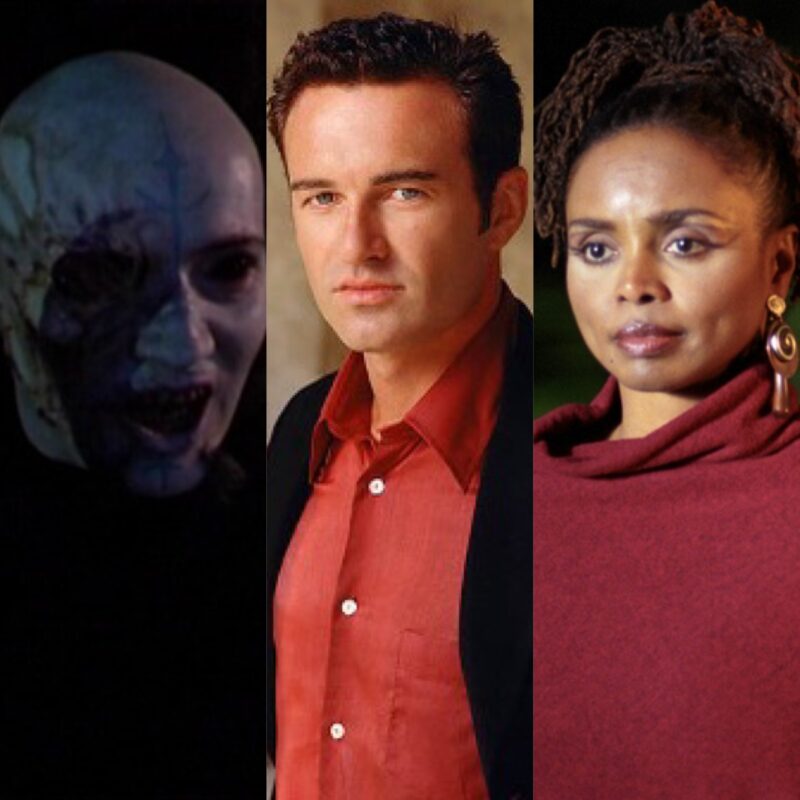
The Source
The Source of All Evil, often simply called The Source, is Charmed‘s answer to the devil. He often worked from the shadows to scheme against the sisters, and it was he who sent Shax to kill Prue. The Source was one of the first recurring threats and a big bad for the series. The main shame is that his big return in later seasons was a letdown, as he died almost immediately before doing anything effective.
Cole Turner
Cole Turner was the great love of Phoebe Halliwell’s life. Though not the final love, Cole was the one who spent the most time as Phoebe’s love interest. Expertly performed and providing one of pop culture’s very best lovers-to-enemies to vice versa (over and over again) we have ever seen. His chemistry with Phoebe was scorching. He was brilliant, emotional, charming as hell, sexy, and morally all over the place. Cole worked when he was bad and conflicted by love, but his turn to good was actually very well-handled… until it wasn’t. The actor leaving the show meant hastily character-assassinating him, figuratively and literally, to provide an exit. He did a lot for his wife and her sisters, but apparently “he was never good”. Ok, Phoebe.
The Seer
Not to be confused with Kira the Seer from later seasons, played by Cordelia Chase herself. The original Seer was a cool, calm, and collected demon who rarely showed a lot of rage. She was smart, she knew how to stand back and concoct a plan and set events in motion. Even when earlier on encountering the sisters, the two forces didn’t attack each other, because the Seer wasn’t really much for fighting and wasn’t an obvious immediate threat, or so the sisters thought.
Using Cole and Phoebe’s love to engineer a plot to take the power of the Source into herself was brilliant. Aside from the confusing logistics as to whether the baby was really hers, as the Seer claimed, or was really part Halliwell, ultimately the power of the fetus was too strong for her body to hold. Halliwell magic also helped end her threat, right as she was getting started. She was an underrated and worthy character and a noteworthy Black woman villain in this type of show.
Once Upon a Time: Regina Mills aka The Evil Queen
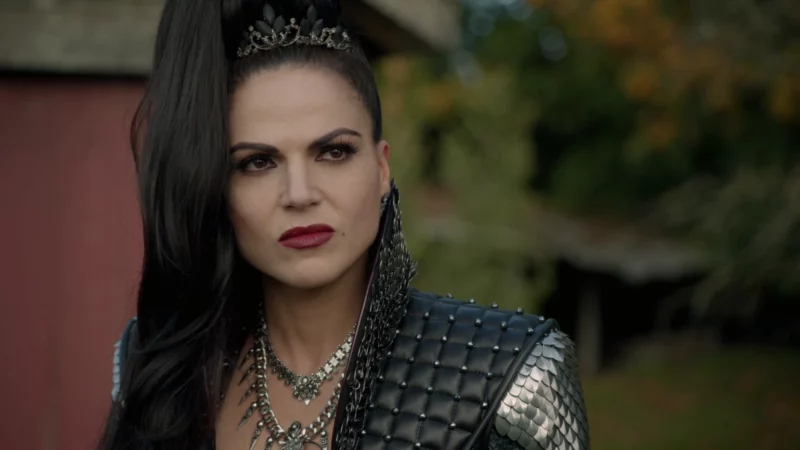
Once Upon a Time had many villains, but no one did it better than Regina Mills, the Evil Queen. Ignoring her eventual lackluster romance with Robin Hood, *groan*, Regina was always a delight on screen. A powerful sorceress, petty, uncompromising, and sinister, she knew how to conjure up chaos whenever it suited her. Regina’s most shameful act was her continued assault of the Hunstman before killing him right as he found love with Emma. Emma and Graham were one of the show’s only decent hetero ships.
Speaking of ships, Regina and Emma should have happened. Had either of them been male, they would have banged very quickly. They already shared a child. It would have been miles better than Emma and Hook (aka Mr. Pretty but BO-RING), or Regina and Robin. Regina, like many villains on this list, got a redemption arc. Hers was interesting in that people, understandably, did not easily trust or forgive her. She killed and controlled a lot of people. She laid curses on the entire land. And though the narrative didn’t bring it up or properly address it, she assaulted a person. But above all else, Lana Parilla was the standout of the entire cast and was phenomenal, especially when she got to be bad.
Honorable Mentions/Conclusion
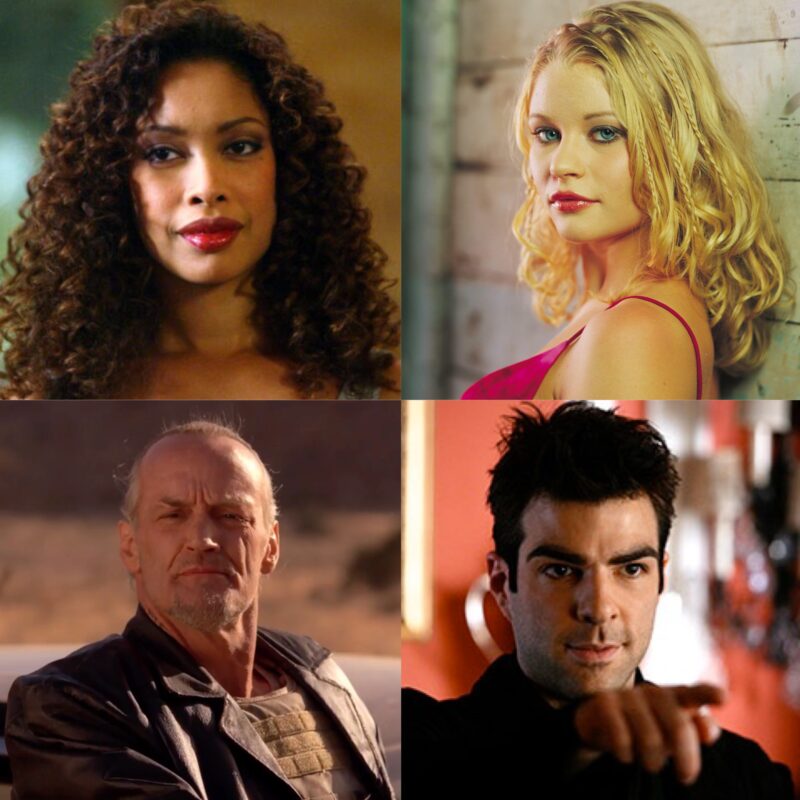
For some, a hero, a team, or a story is only as good as its villains. Many shows have featured memorable villains, including ones I didn’t list above. How about a primordial being once possessing Cordelia Chase in Angel who would eventually be portrayed by the incomparable Gina Torres once she got her own body? What about the alien who killed Alex in the original Rosewell series? Maybe the utterly contemptible Neo-Nazi who was the final big bad of Breaking Bad? Remember the sociopathic serial killer who killed people for their powers on Heroes?
Like with any character, villains can be great at one point, ruined the next, or solid the entire time. Do you prefer a complex, nuanced villain? One who just wants to watch the world burn and make people suffer? Folks whose motivations make sense, whether or not you agree with their methods? Do you like redemption arcs? Villains softened or tamed by love? Or do you like villains who engage in toxic love with fellow villains? Your mileage may vary. Tell me what kind of villains you like in the comments below.
Be the first to leave a review.
Your browser does not support images upload. Please choose a modern one
I identify as a womanist. I also identify as both gay and queer. I am gender fluid and respond to he/him, she/her, and they/them. I am a Black American-Descendant of American Chattel Slavery who is pro Black Diaspora and pro creating Global Black Strongholds (Blacks across the Diaspora holding it down in each region to allow all Blacks to go to each, and be safe and in community together). I am a comics, tv, movie, and video game stan. My expertise for comics and related media are DC Comics, Marvel Comics, Archie Comics, and a little bit of others here and there, but I'm hoping to branch out to other, Blacker and indie comics and related content. I'm a binge watcher and can talk about shows and movies for days. You can find me on YouTube and various other social media platforms as thaboiinblue.

2 Comments
Leave a Reply
Cancel reply
Leave a Reply
This site uses Akismet to reduce spam. Learn how your comment data is processed.



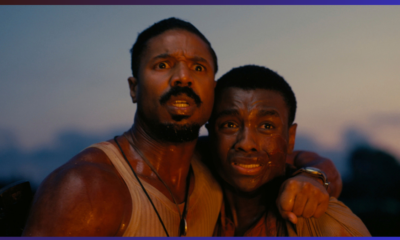

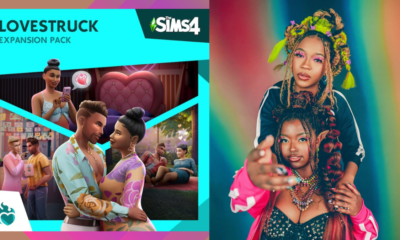

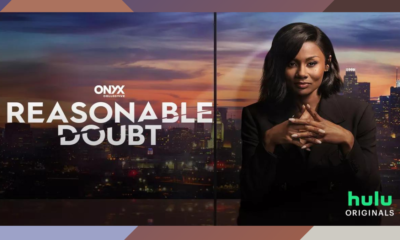









Pingback: 'My Adventures With Superman' Is Beyond Cute – Fabulize Magazine
TechyList
September 11, 2023 at 12:05 AM
I love villains! They are so interesting and I can’t wait to see what they will do in the next episode.